Feed aggregator
ODA approves rules for Oregon hemp production
The Oregon Department of Agriculture is optimistic the state’s first industrial hemp crops will be planted this spring.
The department last week adopted administrative rules that will govern production and handling, plus licensing of growers. The process culminated a long struggle by hemp backers, who maintain hemp can be used for clothing, food, cosmetics, oils and other purposes.
State approval was hung up for years by federal drug laws, which classify industrial hemp the same as marijuana. Oregon voters approved hemp production last November in the same measure that legalized recreational use, possession and cultivation of pot.
The rules define production and handling requirements while establishing a permit and licensing process for growers of industrial hemp, which includes fees associated with ODA’s program. With the adoption of the rules, ODA is expecting a crop to be planted this spring as permits will soon be issued.
Under state law, licenses to grow or handle industrial hemp fiber and permits to grow agricultural hemp cost $1,500 and are valid for three years. Hemp fields must be at least 2.5 contiguous acres, and the crop must contain less than 0.3 percent tetrahydrocannabinol (THC) to distinguish it from marijuana, which has much higher THC levels.
Hemp production is still illegal under federal law, and the feds may still be a roadblock to Oregon production. Oregon ag department spokesman Bruce Pokarney said hemp seed for planting is available only in Canada, and bringing it to Oregon will require approval by the federal Drug Enforcement Administration.
“That’s the next hurdle we need to clear,” Pokarney said.
Water supply outlook bleak for E. Oregon farmers
ONTARIO, Ore. — Easter Oregon farmers’ hopes for a normal water year in 2015 are fading fast.
There is about 30,000 acre-feet more water stored in the Owyhee Reservoir than at this point in 2014, and snowpack levels are slightly ahead of where they were this time last year.
But last year was disastrous for farmers who depend on the Owyhee Project, which supplies water to 118,000 acres of irrigated land in Eastern Oregon and parts of Southwestern Idaho.
The annual allotment for farmers who get their water from the Owyhee Irrigation District was slashed from the usual 4 acre-feet to 1.7 acre-feet last year. Despite that, the system stopped delivering water in August, two months earlier than normal.
An estimated 20 percent of farm ground in Eastern Oregon was left idle last year in anticipation of the low water year.
“The good news is we’re a little better than last year,” said OID Watermaster J.L. Eldred. “The bad news is we’re still not in good shape.”
Basin-wide, total snowpack was at 74 percent of normal Feb. 2.
While there is about 114,000 acre-feet of available irrigation water stored in the reservoir, there is typically more than 300,000 acre-feet at this point during a normal water year, said Bruce Corn, a farmer and member of OID’s board of directors.
“We’re in a little better position than we were last year at this time but we still need a lot more snow to have an adequate irrigation season,” he said. “Right now, there is a lot of uncertainty and concern.”
High-pressure weather systems over the Treasure Valley area have mostly kept storms at bay this winter, said OID Manager Jay Chamberlin.
“We’re really losing ground out there pretty fast,” he said. “We need to ... get rid of these high-pressure systems and get some storms. It’s getting kind of serious.”
The only real good news is that Owyhee River flow levels near the reservoir have risen quickly following rain storms, which is an indication the ground is wet, Corn said. “That’s something we did not see last year.”
Owyhee basin snowpack levels aren’t terrible but three straight dry years have compounded the water supply situation, said Julie Koeberle, a hydrologist with the Natural Resources Conservation Service snow survey program in Oregon.
While reservoir storage levels are above last year’s totals, “That’s really just a drop in the bucket from what they actually need,” she said. “They really have a long ways to go.”
There is time for improvement, she said, but if the situation hasn’t improved by the first part of March, “the message will be to brace for a low water supply.”
Irrigators aren’t sounding the alarm yet, she said, “But they’re raising their eyebrows.”
Chamberlin said farmers are “hoping to pick up a couple of good storms in February and get this turned around.” But at the moment, he added, “It’s not looking good for us.”
Untitled

Detail from the headlands cliffs Southern Oregon coast, near Langlois

Clubs and Activities, Feb. 2, 2015
Official: Nursery imports may pose pest threat
PORTLAND — Wyatt Williams, an invasive species specialist with the Oregon Department of Forestry, said afterward he felt like he was entering the lion’s den. He was about to tell members of the Oregon Association of Nurseries, the most valuable sector of state agriculture, about a problem that would “send ripples through your industry and my field, forest health.”
Specifically, the importation of live plants into Oregon and the U.S. is a primary pathway for invasive insects and pathogens, some of which could cause severe damage to forests in particular.
Williams, invited to speak during the Northwest Agricultural Show in Portland, was hired in 2012 as the state forestry department’s first invasive species specialist. He said there was a 500 percent increase in live plant imports to the U.S. from 1967 to 2009, and about 4 billion plants arrive in the country each year. Federal monitoring is done at 18 stations with only 63 full-time inspectors, he said, and standard inspections may miss an estimated 72 percent of pests.
“We’re missing stuff at the ports of entry,” Williams said. “Something’s broken there.”
By backtracking invasives and comparing shipping records, experts deduced that 69 percent of invasive insects and diseases arrived with live plants, he said.
Oregon’s nursery industry officials say they’re well aware of the problem. The Oregon Association of Nurseries endorses a systems management approach detailed in a 106-page publication, “Safe Production and Procurement Manual.” The manual, available online at http://c.ymcdn.com/sites/www.oan.org/resource/resmgr/imported/pdf/SafeProduction.pdf, lays out best practices for greenhouses and nurseries to detect pests and diseases and respond quickly if they appear.
Regarding plant imports, the manual recommends checking to see if the material is already available in the U.S. If so, producers can save time and money while reducing risk.
If it must be imported, the handbook recommends growers find an officially accredited nursery in the exporting country and have the material grown out for at least one year or one growing season. It also should be inspected, tested and evaluated in the source country before shipment, or evaluated at an accredited facility in the U.S. prior to commercial increase, according to the manual.
Jeff Stone, OAN executive director, said in an email that the manual is an industry standard and has been used as a model elsewhere. It also helped shape USDA policy governing interstate shipment of plant material.
The Oregon Department of Agriculture also collaborates with the industry to keep pests and diseases out of Oregon, said Helmuth Rogg, the department’s Plant Program director.
“We are all in the same boat,” Rogg said in a prepared statement. “We want to protect our industry, and our state, for that matter, from dangerous plant pests that could be associated with live plant material coming into Oregon.”
The department has regulations in place and uses quarantines to keep pests out of the state, he said. The department also sets thousands of traps to monitor for pests, he said.
Williams, with the state forestry department, said cross-department and industry collaboration is key to keeping invasive insects and diseases under control.
The biggest threat on the horizon is the emerald ash borer, which hasn’t made it to Oregon yet but has killed an estimated 100 million trees in 24 states since it was detected in 2002, Williams said.
Oregon ash grows in wetlands that provide habitat for “all kinds of animals,” he said. An infestation that wiped out Oregon ash could pose any number of problems, he said. The city of Denver, where ash make up 15 percent of the city trees, estimated it would cost $1 billion to remove and replace every ash, Williams said. Portland has an estimated 72,000 ash trees in public places, he added. Williams said he’s placed traps in Oregon ash groves and monitors them for presence of the emerald ash borer.
Other diseases and bugs of concern include gypsy moth, the azalea lace bug, sudden oak death and thousand cankers disease, William said.
City sees carbon credits as forest revenue source
ASTORIA, Ore. — In an innovative trade-off, Astoria has agreed not to aggressively harvest timber in the Bear Creek watershed over the next decade in return for carbon credits that could help industrial polluters offset carbon-dioxide emissions that contribute to climate change.
The city is partnering with The Climate Trust, a Portland nonprofit that would purchase the carbon credits. Utilities with fossil-fuel driven power plants pay the trust to find projects that offset pollution and meet the requirements of Oregon’s landmark emission standards law.
By committing to a less aggressive timber harvest at Bear Creek, Astoria could receive about $358,750 in carbon credits after expenses this year and about $130,000 annually for the next nine years. The first year has the most significant potential value because it is based on the city’s existing inventory of timber, while the value for the following years is tied to growth.
“We commit to harvest less than what we could and we then can monetize that,” said Michael Barnes, the city’s consulting forester.
Carbon-dioxide emissions are the most prevalent greenhouse gas from human activity and are tied to global warming. The ocean, soil, atmosphere and forests act as carbon “sinks” that absorb more carbon than is released, so preserving forests can help store carbon and reduce the amount of carbon dioxide released into the atmosphere.
The Climate Trust was created to help achieve Oregon’s landmark 1997 law that set standards for carbon-dioxide emissions at power plants. The trust’s projects have led to an estimated 2 million tons of emission reductions, the equivalent of the annual greenhouse gas emissions from 421,000 passenger vehicles.
“One of the things that’s appealing about this project is it’s providing a financial incentive to decrease the harvest in an area that’s really providing clean drinking water to the city of Astoria,” said Mik McKee, The Climate Trust’s senior project analyst for forestry.
McKee said there would be “greater attention paid toward conservation, and clean water, and forest health. And that’s a really appealing thing on a local scale, because that’s going to translate for the citizens of Astoria and the people in the community.
“On a larger scale, this is a harder concept to explain … but trees sequester carbon. So these trees that aren’t being cut are going to pull carbon dioxide out of the atmosphere that, theoretically — at the most simple level — (is) being emitted by the Oregon utilities that are essentially paying through The Climate Trust to have these carbon offsets retired.”
The Astoria City Council approved the project with The Climate Trust in December.
The city already harvests less timber than it could from the 3,700-acre Bear Creek watershed to help protect the drinking water supply.
Based on a 3 percent annual growth rate, Barnes said the city could harvest about 3 million board feet a year and not deplete an inventory of about 100 million board feet of standing mature timber.
But the city harvests about 750,000 board feet of timber a year. Last year, the harvest was larger — just under 850,000 board feet — and the city netted about $350,000 for the capital improvement fund.
Revenue from the carbon credits would also go into the capital improvement fund.
“The harvest level that we’re able to do annually under this program is no different than what we’ve been doing,” said Ken Cook, Astoria Public Works director. “So this is not crimping our style necessarily. The level we’ve been harvesting ensures that the water quality is not harmed.”
Oregon snowpack at record lows
GRANTS PASS, Ore. (AP) — Oregon’s mountain snowpack, vital for farms, fish and ski resorts, is posting record low depths despite normal precipitation.
The reason is persistent warm weather this winter.
Natural Resources Conservation Service hydrologist Julie Koeberle says there is time for things to improve, but expectations are low. Long-range forecasts call for warm weather, with no clear indication whether it will be wetter or drier than normal. Meanwhile, some snow measurement sites are their lowest since the 1960s, 1970s and 1980s.
“It really depends on what happens in February,” Koeberle said. “Come March, the writing will be on the wall for sure.”
The U.S. Drought Monitor shows drought spreading and intensifying across Oregon, except for the coast and the Willamette Valley. With rains not heavy enough to overcome persistent dry conditions, 2015 is likely to be the third straight year of drought in southern parts of the state, she said.
High temperatures in the western half of the state have left current snowpack measurements low: 16 percent of normal for the Willamette Valley, 28 percent for central Oregon, 18 percent for the Rogue-Umpqua region, and 17 percent for the Klamath Basin. Things are better in eastern Oregon, where temperatures have been lower. Snowpacks ranged from 47 percent in the Umatilla, Walla Walla, and Willow basins, to 79 percent in the Harney and Owyhee basins.
Precipitation throughout Oregon has been normal or near normal since the Oct. 1 start of the water year, despite a dry January, according to the service.
The reservoirs behind major dams operated by the Army Corps of Engineers in the Willamette Basin generally do not start filling until the beginning of February, said corps spokesman Scott Clemans. Overall, they are 5 percent full. In the Rogue Basin, reservoirs are 44 percent full. Lost Creek Dam reservoir is filling, but Applegate is not.
Clemans said in recent years, heavy rains have arrived in late spring in time to fill reservoirs.
Snow that builds up in the mountains serves as a natural reservoir, feeding streams and replenishing groundwater as it melts.
“We are really kind of staring climate change right in the eye right now,” said Kathie Dello, associated director of the Oregon Climate Change Institute at Oregon State University.
While there will still be plentiful snowpacks in some years, overall the trend is for them to decline as average temperatures continue to rise, she said.
“Last year we had a bad fire season, and that is in part due to the lack of snow,” which left the ground bare, and prone to dry out, she added.
Beverly C. Harrington
Where Floras Lake ends and Floras Creek starts
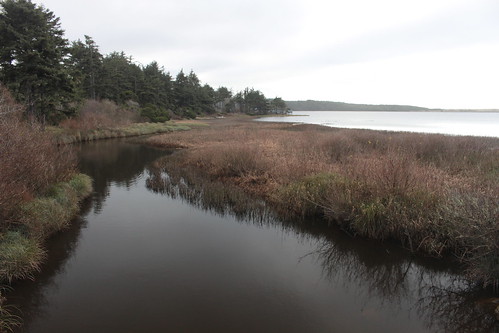
Where Floras Lake ends and Floras Creek starts

Floras Creek
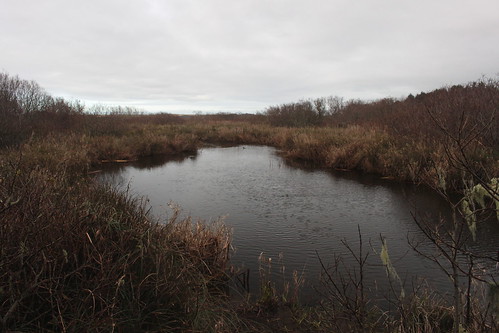
The competition begins
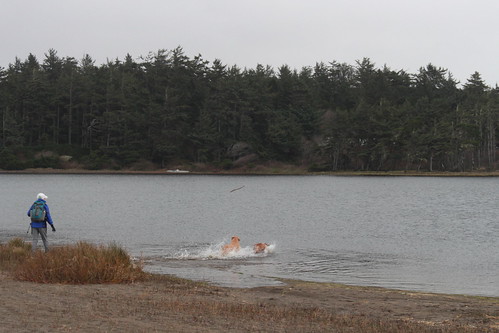
Jumping for joy
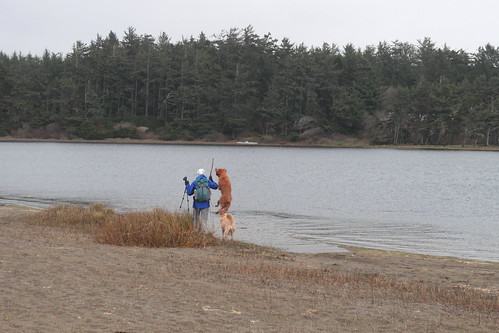
Floras Lake
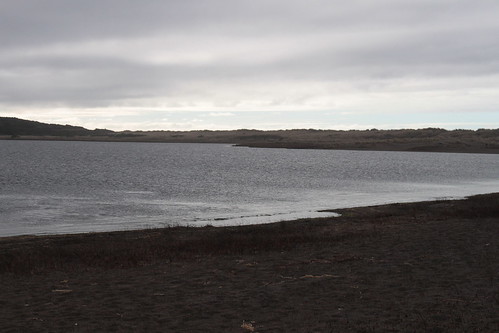
Rosie picks up a souvenir

A stiiiiiiick! I found a stick! Ohboyohboyohboy...

Sophie takes a more dignified approach

I'm not sure but I think Rosie likes Floras Lake

